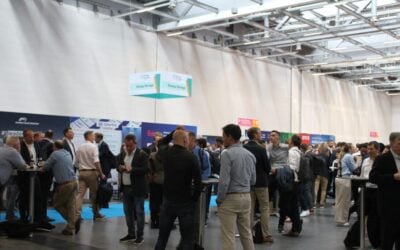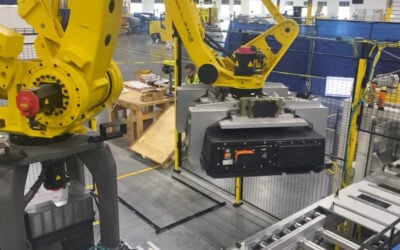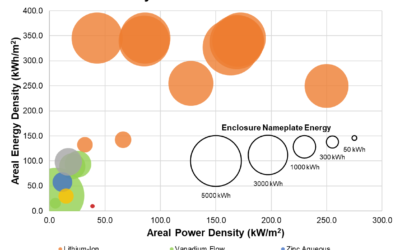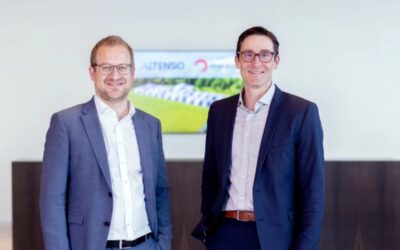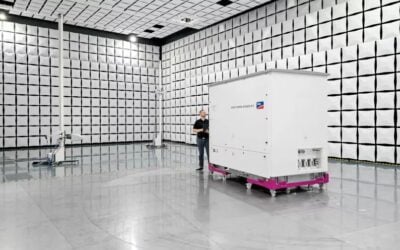The Tesvolt USP is its use of active bidirectional balancing. Credit: Tesvolt
Germany-based inverter firm SMA Solar technology has qualified lithium-based energy storage systems from commercial battery provider Tesvolt for use alongside SMA’s Sunny Island battery inverter.
Together the two products can be used in solar, CHP, wind and hydroelectric power plants in both off-grid and on-grid scenarios. The battery systems have capacities ranging from 10-120kWh and can have different charging speeds as well as the potential to be expanded at any time.
Enjoy 12 months of exclusive analysis
- Regular insight and analysis of the industry’s biggest developments
- In-depth interviews with the industry’s leading figures
- Annual digital subscription to the PV Tech Power journal
- Discounts on Solar Media’s portfolio of events, in-person and virtual
Christian Went, Tesvolt international key account manager, told Energy Storage News that the cooperation with SMA will mainly be in the field of commercial and industrial applications.
Referring to the battery, he said: “We found out that for stationary applications of lithium cells the compound of lithium-ion phosphate is the most stable and reliable one and it is a very safe compound – the battery cannot explode or burn by internal or external damage – where we added a manganese share as well.
"Most batteries do not follow what the Sunny island is capable of doing, so we developed a battery which can. Therefore we have been closely cooperating with SMA already in the development stage.”
Tesvolt´s battery management system balances charges of lithium cells using active-bidirectional management of cells, which greatly increases the service life of the individual cells and optimizes the dealing with high loads, claims Went, whereas other suppliers usually use a passive management of cells which causes high losses.
Combining the Tesvolt battery with the SMA inverter has an overall system efficiency of 79-84%, which generally allows businesses to generate their own electricity for EUR0.09-0.14/kWh (US$0.1-0.16) while factoring in the original costs for the storage system and PV system, according to Simon Schandert, Tesvolt chief technology officer.
Last summer the product became ready and Tesvolt started to supply its batteries to the market in Germany. For Germany and the UK, the business model is mainly about increasing the self-sufficiency rate on grid, said Went. In these markets existing SMA professionals will receive training on the Tesvolt systems. However, emerging countries where grid infrastructure is not well developed also presents a strong opportunity for the Tesvolt SMA partnership to provide off-grid solutions.
Went added: “Our USP generally remains the modular assembly, the unique BMS and providing a battery with high loads.
“It is not a business model that you can roll out easily. It is still for niche applications especially in the industrialised countries but we see that there are some small businesses (commercial and industrial), which have high electricity prices from the utilities and so we approach them saying that, with a PV plus storage solution, the LCOE will be lower than the price they are paying to the utilities."
Tesvolt is aiming for EUR15 million turnover this year.
Active versus Passive
Went explained that the differences between the two forms of management:
“Passive management is done by means of switchable or fixed bypass resistor where cells with an excessively high voltage are discharged. The resulting electrical energy from the different states of charge is converted into heat and is lost.
"In contrast to the unidirectional balancing, for active bidirectional balancing, each cell can be loaded from the other cells of a stack, or can be discharged in all other cells. This allows a fast and efficient balancing of the stack. This method is realized via bidirectional flyback converters, which are attached to each cell," he explained.
"The bidirectional balancing system was developed by Tesvolt. It is based on the Power-pump method, which has been extended by adding an electrically isolated flyback converter to each cell.”

